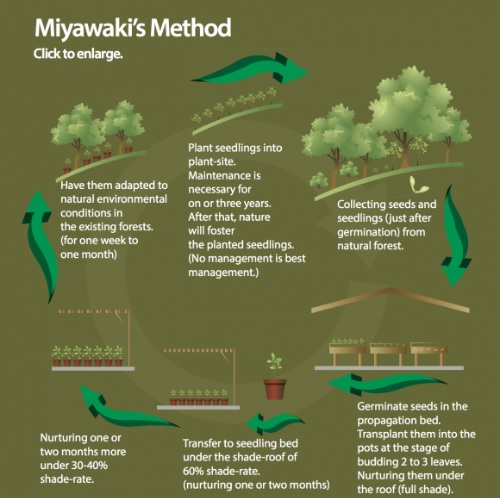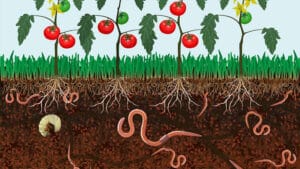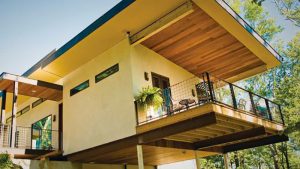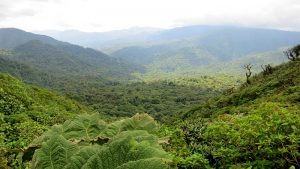Over the last few years, tiny but dense forests have been springing up all over Europe as part of a movement aimed at restoring biodiversity and fighting the climate crisis. The chosen method was invented by Japan’s most famous botanist, Akira Miyawaki.
The Miyawaki method involves exploiting small urban spaces to create tiny yet productive forests which are as rich in biodiversity as larger wild areas would be. These tiny forests are grown in places such as school courtyards, street-side public spaces or private gardens.
The basic idea is to fill these chosen areas with native plants in order to create a small, functional ecosystem capable of restoring the soil, protecting resources such as water and air quality and acting as a biodiversity hotspot.
Proponents of the Miyawaki method say that these miniature forests grow 10 times faster, become 30 times denser and have a level of biodiversity 100 times greater than those planted with more conventional methods.
Akira Miyawaki was the botanist who, in 1970, observed that the trees around Japan’s Shinto and Buddhist shrines tended to contain mainly native species, well adapted to the soil and climate of the Japanese islands. He later found that only 0.06% of contemporary Japanese forests were truly indigenous forests, while the rest were populated with non-native tree species or had been planted in unnatural ways.
Thanks to his observations and studies, he paved the way for a useful system for restoring indigenous forests on degraded or deforested soils, devising the so-called Miyawaki method. Using this formula, he created over 1,700 forests across Asia, 96.7% of which developed into a hardy ecosystem within ten years.

All natural forests are made up of several layers of vegetation which include tall and medium-sized trees, shrubs and herbs.
Scientists estimate that natural forests can store 40 times more carbon than plantations of individual species
Growing over 10 times faster and possessing greater biodiversity potential than other types of forests, the Miyawaki method has been taken as a model by organizations such as Urban Forests in France and Belgium and by the Tiny Forest initiative in the Netherlands.
On March 2nd, Urban Forests completed a Miyawaki forest consisting of 22 species (1,200 trees) in Toulouse, France, in a 400o square foot area.
“The plantations are made in a very dense way, in order to encourage cooperation between species – Audu, one of the urban forest volunteers explained to Actu Toulouse – Captures more CO2 and trees grow up to ten times faster than one conventional forest “.
It is just one of the many Urban Forests projects, and the fifth that has been completed non-profit this year. In total Miyawaki forests in Belgium and France consist of 21,000 trees on 75,000 square feet.
The first forest of this kind in France was planted in March 2018 alongside a busy four-lane road on the edge of Paris. The thicket was intended to reduce noise and filter the air for those who lived nearby.
As for Holland, however, the Tiny Forest Initiative started in 2015 in the city of Zaandam by the Institute for Nature Education and Sustainability (IVN) which created 100 Miyawaki forests across the country and has already planned another 30 during the first three months of 2020.
In 2017, ecologists from the University of Wageningen in the Netherlands examined newly planted mini-forests and concluded that::
“They increase biodiversity compared to the nearby forest. Both the number of groups of species and the number of individuals are generally higher than in the reference forests “
As Fabrice Ottburg, one of the authors of the Wageningen study, explained to The Guardian that this allows more sunlight to reach flowering plants that attract pollinators. Diversity is also boosted by planting multiple species, which “provide more variety in food and shelter for a higher diversity of animals like insects, snails, butterflies, amphibians, bugs, grasshoppers”, Ottburg said.
“This is a great thing to do, – said the naturalist researcher Eric Dinerstein in a scientific publication last year – So this could be another aspect for suburban and urban areas, to create wildlife corridors through contiguous ribbons of mini-forest.”
Sources: The Guardian, Actu Toulouse









